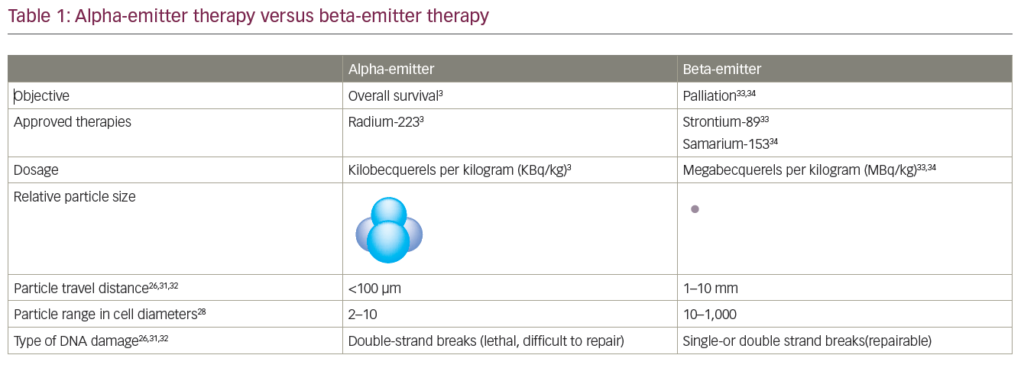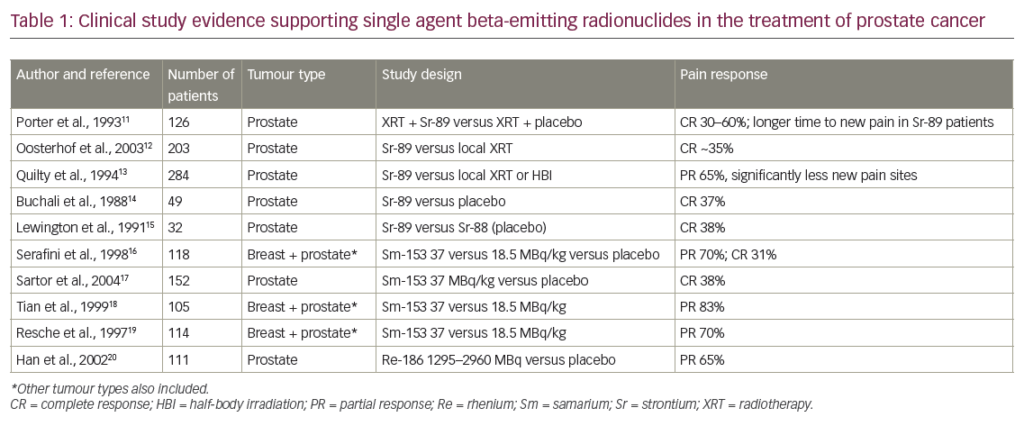The association of obesity with cancer is a well-known epidemiologic evidence for many types of cancer. Adiposity contributes to the increased incidence of esophagus, colon, endometrium, kidney, and breast cancer and plays an important role also in cancer progression and drug-resistance phenomena. 1 The Cancer Prevention Study II concluded that 14–20 % of cancer deaths were attributable to obesity. 2 Although contrasting data reported on the incidence of prostate cancer (PCa) in obese men, 3,4 obesity has been more consistently associated with increased risks of advanced PCa or death from PCa. 5,6 Worldwide, both incidence and mortality for PCa are increasing. 7 Testing with serum prostate specific antigen (PSA) and better treatment practices have contributed to only minor decreases in cancer mortality, and PCa incidence rates remain most elevated in high income countries. 8 The westernization of diet, a more sedentary lifestyle, and increasing levels of obesity may play roles in maintaining high PCa incidence rates worldwide. 9
The increasing prevalence of obesity and the extension of life expectancy, two independent risk factors for PCa, represent important health aspects that should be carefully monitored in future clinical practice. In fact, obesity prevalence is growing progressively worldwide even in old age. 10 Debate exists about the relation between obesity in old age and its clinical relevance. Epidemiologic controversies derive also from the lack of consensus about the criteria of definition of obesity in the elderly. Aging is associated with visceral fat increase, while subcutaneous fat in other regions of the body decreases. This aspect, in addition to age-related decline in body height and muscular mass, have led some authors to criticize the use of the body mass index (BMI) as an accurate indicator of obesity in older subjects. 11 If the forementioned anthropometric changes are taken into account, BMI in the elderly generally underestimates adiposity.
Obesity and age are well-known independent risk factors for PCa, but they have not yet been fully investigated for their possible interactions. Otherwise, data are progressively accumulating for other chronic diseases associated with aging, including cardiovascular diseases (CVDs), cognitive decline, Alzheimer’s disease, and disability. Studies about CVD have suggested that specific body fat distribution indices may confer a greater risk for adverse health outcomes in elderly persons. In patients with coronary artery disease, central obesity was associated with the highest risk for mortality, 12 and measures of central adiposity consistently appear to be stronger predictors of CVD risk compared with other measures. 13
Different hypotheses have been proposed to explain the molecular association between PCa and obesity, including perturbation in steroid hormones homeostasis, high levels of insulin and insulin-like growth factor (IGF), systemic inflammation, and adipokines signaling. 14 In recent years, much of the research in this area has focused on leptin, a prototypical adipokine able to influence energy metabolism, insulin action, lipid metabolism, and inflammation. Leptin is a 16 kDa peptide produced predominantly by adipocytes and its serum levels are higher in obese individuals compared with lean subjects.
The expression of the leptin receptor is significantly higher in PCa than in both benign prostatic hyperplasia and normal prostatic tissue. 15 Leptin treatment of PCa cells determined the activation of intracellular signaling pathways associated with proliferation, migration, and nvasion. 16,17
The higher the blood leptin concentration, the greater the negative effect on cellular differentiation and the positive one on cancer rogression in PCa. 18 Collectively, there are convincing indications that elevated plasma leptin concentration is predictive of high-grade disease and more advanced tumours. 16,19
In our observational study we aimed at verifying the association of serum leptin with PCa. In particular, we considered the correlation of leptin values with PCa in dependence of age and age-associated anthropometric measures of obesity.
Materials and Methods
Patients and Clinical Samples
Subjects analyzed in this study were derived from cohorts of patients routinely followed and treated in the Urology Clinic of our University. We have enrolled 70 consecutive patients diagnosed for prostate carcinoma and requiring surgical treatment and 68 age-matched patients with urologic, nontumoral diseases, including hydrocele and urinary lithiasis. The research has been approved by the Ethics Committee of our hospital and did not modify the routine management of the patient. A detailed clinical history including smoking habit, alcohol abuse, and pathologic relevant variables (Gleason score, tumor node metastasis [TnM] stage) has been recorded for each patient enrolled. Obesity was evaluated by BMI calculated with the bodyweight divided by the square of the body height (kg/m2), and by waist-to-hip ratio (WhR). Patients were classified as obese if BMI ≥30 or WhR ≥0.90. Prior to the surgical procedure, a blood sample was drawn from overnight-fasting patients and analyzed by hospital diagnostic laboratory for serum testosterone, PSA, and insulin according to standardized procedures. Prostate tissue samples have been collected after radical prostatectomy and processed for histologic analyses.
Cell lines and Western Blot
The transformed prostate epithelial cell line RWPE-1, the tumorigenic RWPE-1-derived cell line WPE-nB26, and the lymph node metastasisderived cell line LnCaP were obtained originally from ATCC (Rockville, Maryland, USA). WPE-nB26 and RWPE-1 were maintained in keratinocyte serum free (K-SFM) supplied with epidermal growth factor (EGF) and bovine pituitary extract (Gibco, Life Technologies, Park Paisley, UK). LnCaP cells were maintained in RPMI 1640 supplemented with 10 % fetal bovine serum, hydroxyethyl piperazineethanesulfonic acid (hEPES), sodium pyruvate, glutamine, and penicillin-streptomycin (Sigma-Aldrich, St Louis, Missouri, USA). Total proteins were extracted by resuspending the cells in a buffer containing 1 % v/v Triton X-100, 0.1 % w/v SDS, 2 mM calcium chloride (CaCl2), and 100 mg/ml phenylmethyl sulfonyl fluoride. Protein content was determined using the Protein Assay Kit 2 (Bio-Rad Laboratory, hercules, California, US), and 60 μg of proteins were electrophoresed in 10 % SDS–polyacrylamide gel and then electrotransferred to a nitrocellulose membrane (Whatmann, Dassel, Germany). The membrane was incubated with 1 μg/ml LEPR primary antibody (Santa Cruz, California, US) and then with horseradish peroxidase-conjugated anti-mouse antibody. Protein bands were visualized using a chemiluminescent substrate for detection of peroxidase activity (Thermo Scientific, Rockford, Illinois, US).
Immunohistochemistry
Tissue specimens were fixed in 4 % w/v formaldehyde in 0.1 M phosphate buffer, ph 7.2, and embedded in paraffin. Slide-mounted tissue sections (4 mm thick) were deparaffinized in xylene, hydrated serially in 100 %, 95 %, and 80 % ethanol, and then were incubated with 3 % v/v h2O2 for 15 minutes. Slides were incubated with an anti-human leptin receptor (LEPR) primary antibody (Santa Cruz, Dallas, Texas, US) for 1 hour at room temperature (RT) and after extensive washing, antibody binding was Figure 1: Leptin Concentrations Measured by Immunoassay in Serum of Control and Prostate Carcinoma Patients Table 2: Selected Characteristics of the Study Population by Disease and by Tertiles of Leptin Concentrations Mean and median values with standard deviation (SD) or standard error (SE) are shown in the table. All values measured are represented in the box blot. revealed using peroxidase-conjugated anti-mouse secondary antibody and the colorimetric substrate 3,30-diaminobenzidine (Sigma-Aldrich).
Leptin Measure
Fresh blood samples were allowed to clot for 30 minutes before centrifugation for 15 minutes at 1,000 x g. Serum samples were aliquoted and stored at –20°C until the analysis. Serum leptin was measured using the Quantikine enzyme-linked immuno sorbent assay (ELISA) kit according to the manufacturer’s instructions (R&D System, Inc., Minneapolis, Minnesota, USA). Briefly, 100-fold diluted samples were added per well in triplicate and plate was incubated for 2 hours at room temperature. After three washes, leptin conjugate was added to each well, and plate was incubated for 1 hour at room temperature. After a new cycle of washes, the substrate solution was added to each well and optical density was determined within 30 minutes using a microplate reader set to 450 nm. Mean optical density values from the triplicate readings were used to calculate, through interpolation in a standard curve, leptin concentrations for each sample.
Statistical Analysis
Descriptive characteristics of the PCa cases and control subjects were expressed as proportions and mean or median values ± standard deviation (SD) (or standard error [SE]). Comparisons between groups were conducted using χ2 tests for categorical variables and one-way analysis of variance (AnOVA) with Bonferroni corrections for post hoc pairwise comparisons for continuous measures. In the comparison among the three tertiles of leptin levels, the nonparametric Kruskal-Wallis test was used to compare quantitative variables. SPSS for Windows version 16.0 (Chicago, Illinois, USA) was used for drawing receiver operator characteristic (ROC) curves for leptin and for the statistical analysis. A p value <0.05 was considered statistically significant.
Results
High Serum Leptin Levels are Associated with Prostate Carcinoma
For this study, we enrolled 70 consecutive patients diagnosed for PCa and 68 age-matched patients affected by nontumoral urologic diseases (see Table 1). Both mean body fat, measured by BMI, and distribution in the BMI categories were not statistically different among the groups, with overweight and obese subjects representing about the 50 % of the total in all clinical groups. On the contrary, abdominal adiposity measured by WhR was significantly higher in the PCa group with respect to control. Among the descriptive variables taken into account, significant differences were seen only in serum PSA, as expected, and in testosterone with PCa patients having higher serum values with respect to the control group (see Table 1). When we measured serum leptin we observed that PCa patients tended to have higher values with respect to reference subjects. Both mean and median values of serum leptin were significantly higher in PCa group in comparison with control group (see Figure 1). In addition the highest leptin values were also measured in the PCa group.
Serum Leptin Values are Better Associated with PCa Risk in Older Patients
We distributed age, BMI and WhR according to tertiles of leptin serum concentration in PCa and in control groups (see Table 2). As expected, median BMI and WhR increased progressively in parallel with increasing leptin values, in both groups. In the tumoral group, but not in the control group, we observed also a significant increment of median age that resulted positively correlated with leptin. In PCa patients, serum leptin tended to be higher in older subjects, independently from BMI. In order to investigate the different predictive roles of BMI and WhR according to age, we evaluated the percentage distribution by BMI categories and median WhR in control and PCa subjects older or younger than 65 years old (see Figure 2).
Results obtained by BMI measures indicated that in control group the number of obese and overweight patients tended to decrease, while in the PCa group only the percentage of obese men decreased. The difference between groups was more evident considering fat distribution. In fact, WhR increased with age in both the control and PCa groups, reaching in the latter a significant difference between subjects older than 65 years in comparison with younger subjects.
Next, we evaluated whether the role of leptin as risk factor for PCa changed with age. For this purpose, we considered the two diagnostic groups, nontumoral and PCa, and compared by ROC analysis the sensitivity/specificity of leptin expression in two populations: patients younger and older than 65 years. The area under the ROC curve (AUC) indicated that leptin can distinguish better between the two diagnostic groups in patients older than 65 years (0.733 versus 0.618) (see Figure 3). In addition, in the older population leptin reached better values of specificity (86 versus 72 %) and sensitivity (77 versus 66 %) with a higher cut-off value (1.3 versus 0.7 ng/ml).
Leptin Receptor is Expressed in Normal and Tumoral Prostate Epithelial Cells
Tissue specimens from PCa were processed for immunohistochemical detection of leptin receptor (LEPR) (see Figure 4). nontumoral glands were individuated in areas adjacent to tumor. LEPR expression was restricted to epithelial cells and in peripheral striate muscle (see Figure 4a, c). In normal glands, LEPR expression was not detectable or faint and limited to few epithelial cells (see Figure 4a). In carcinoma, LEPR, when present, was expressed at higher levels in respect to normal tissue (see Figure 4b). Interestingly, LEPR expression was frequently higher in invasive tumor cells. next we examined LEPR in two transformed human prostate epithelial cell lines, the nontumorigenic RWPE-1 and the tumorigenic WPE1-nB26 (WPE1), and in human PCa cell line LnCaP. WPE1 and LnCaP were highly positive for the expression of LEPR, while it was scarcely detectable in nontumorigenic RWPE-1 (see Figure 4d).
Conclusion
In the necessary effort to elucidate molecular mechanisms underlying PCa progression the leptin hypothesis has different conceivable clues. Preclinical studies have shown evidence for a role of leptin in PCa carcinogenesis and its capacity to promote cancer progression, invasion, and metastasis. 20 Genetic variant in the LEPR has recently been proposed as a prognostic marker of PCa-specific mortality. 21 Moreover, many PCa cell lines express LEPR and activate specific intracellular pathways. We detected LEPR in PCa tissue mainly in association with a less differentiated pattern, while its expression resulted higher in a tumorigenic transformed prostate epithelial cell line with respect to a nontumorigenic cell line. Our data confirmed that LEPR is expressed in prostate epithelium and in particular in luminar cells. The expression of LEPR in normal prostate tissue allow us to hypothesize a possible function of leptin during prostate development or in adult homeostasis. The available data suggest that leptin could control prostate development playing a permissive role in timing sexual development. 22 Serum leptin levels peak in boys just before or during early puberty, followed by a decrease to baseline as testosterone levels rise. 23 It is plausible that leptin may exert a role in this phase of gland reactivation just prior the increase in testosterone levels. The percentage of the leptin expression in PCa was significantly higher than that in BPh and normal prostatic tissue.15 Thus the leptin receptor normally expressed by prostatic epithelial cells can be utilized also by PCa cells to sustain their growth in presence of chronically high levels of leptin, as seen in obese men.
In healthy men, serum leptin positively correlates with BMI and adipose mass and this aspect has been proposed to explain the observed association of PCa with obesity. This positive relationship is due to an increase in leptin release from large relative to small fat cells, such that leptin release per fat cell is about eight times greater in obese subjects than it is in lean subjects.24 In our cohort we detected the higher leptin levels in older PCa patients, although in this subgroup we identified a decreased number of obese men according to BMI measurements. This feature may be due to several causes, including higher abdominal fat accumulation and dysfunctional adipose tissue. Limitations in our study do not permit an unequivocal answer to this question. however, our observations indicate an important variation of the methods of anthropometric measurement, mainly in older people. Comparing WhR and BMI measurements, we confirmed that BMI tended to underestimate the prevalence of obesity with respect to WhR. Abdominal adiposity, which resulted mainly associated to older PCa subjects, can explain the higher levels of leptin seen in this group. As suggested in 2008 by a large European study, the importance of visceral obesity as mortality risk factor is most remarkable among persons with a low BMI.25 Our data indicate that aging was associated with a reduction in BMI values with an increment in the number of subjects in the normal weight and overweight categories, for control and PCa groups, respectively. however, the WhR was significantly higher in older PCa patients with respect to younger PCa patients, generating the concomitant presence of low BMI and high WhR.
In individuals with excess visceral adiposity, dysregulation of many adipokines is frequently observed, including overproduction of leptin. Adipose tissue contains different cell types including adipocytes, preadipocytes, fibroblasts, endothelial cells, macrophages, and multipotent stem cells, able to differentiate into several cell types. In addition, obesity, and also old age, can lead to changes in the cellular composition of the fat pad, as well as to the modulation of individual cell phenotypes. Obesity typically leads to insulin and leptin resistance and a shift to dysfunctional adipose tissue. Important changes affect the amount and activation of macrophages, the status of the vasculature, and the activation of fibroblasts towards a fibrotic phenotype.26 All these events are associated with the induction of a pro-inflammatory status. Both obesity and aging are associated with increased inflammation in adipose tissue. One stimulating hypothesis, recently proposed, is that aging exacerbates obesity-induced inflammation in perivascular adipose tissue.27 Therefore, it is possible that secretion of elevated leptin in older patients is correlated to dysfunctional adipose tissue that is markedly evident in subjects with larger fat tissue accumulation in abdominal portions of the body.
Our study may contribute to elucidate some aspects that have so far been underestimated in epidemiologic studies. BMI categories do not appear to be an appropriate measure of obesity in elderly subjects and may represent a confounder variable in a study evaluating obesity and chronic diseases. In our study, visceral adiposity appeared more appropriate, but probably a retrospective investigation in anthropometric values of enrolled patients could represent the best choice. Leptin values resulted particularly elevated in elderly PCa subjects with higher WhR. Further validation and description of this phenomenon may eventually indicate in leptin a new important prognostic marker of PCa in elderly patients.















